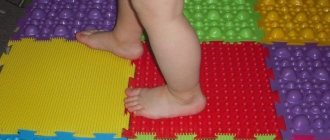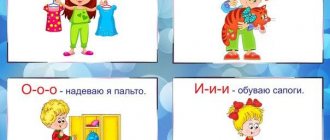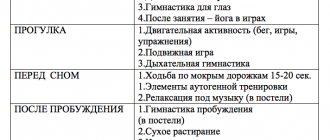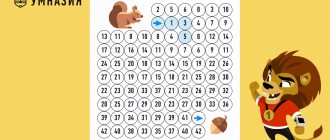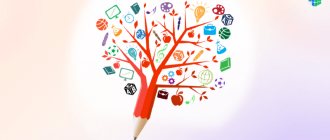Gaming technologies
Gaming technologies are the foundation of all preschool education. In the light of the Federal State Educational Standards (federal state educational standards), the child’s personality is brought to the fore and now the entire preschool childhood should be devoted to play.
At the same time, games have many cognitive and educational functions. Among the game exercises we can highlight those
- which help to highlight the characteristic features of objects: that is, they teach to compare;
- which help to generalize objects according to certain characteristics;
- who teach the child to separate fiction from reality;
- which foster communication in a team, develop speed of reaction, ingenuity, and more.
It is worth mentioning the TRIZ technology (the theory of solving inventive problems), which puts creativity at the forefront. TRIZ puts complex material into a form that is easy and accessible to children. Children learn about the world through fairy tales and everyday situations.
Author: Maria Danilenko.
Technologies of project activities
Project activities in kindergarten are carried out by the child together with the teacher. The goal is to work on a problem, as a result of which the child receives answers to questions.
Projects vary:
- by number of participants: individual, pair, group, frontal;
- by duration: short-term, medium-term, long-term;
- by priority method: creative, gaming, research, informational;
- by topic: include the child’s family, nature, society, cultural values and more.
Health-saving technologies
Health-saving technologies are aimed at strengthening the child’s health and instilling in him a healthy lifestyle. This is especially relevant in light of environmental deterioration, general health, and poor nutrition.
Health-saving technologies can be implemented in different ways. Depending on the goals:
- they can be aimed at maintaining health and implemented by medical personnel: nutrition control, health monitoring, providing a health-preserving environment;
- they can be aimed at the physical development of the child through various types of gymnastics (breathing, finger, orthopedic), hardening, dynamic pauses, stretching, alternative methods - for example, hatha yoga;
- they can introduce a culture of health;
- they can teach a healthy lifestyle through communicative games, game sessions, logarithmics, physical education classes;
- they can be corrective and implemented in sessions of various types of therapies (art, fairy tale, color).
Information and communication technologies
Information and communication technologies have received their natural development in our “advanced” age. A situation where a child would not know what a computer is is almost impossible. Children are drawn to acquiring computer skills. With the help of exciting programs for teaching reading and mathematics, developing memory and logic, children can be interested in the “sciences”.
The computer has a number of significant advantages over the classical lesson. Animated pictures flashing on the screen attract the child and allow him to concentrate his attention. With the help of computer programs, it becomes possible to simulate various life situations that would not be possible to recreate in a kindergarten.
Depending on the child’s abilities, the program can be tailored specifically to him, that is, focusing on his individual development.
At the same time, due to computer illiteracy, teachers can make a number of mistakes. For example, overloading a lesson with slides, being insufficiently competent in computer literacy due to lack of relevant experience.
Any innovation is nothing more than the creation and subsequent implementation of a fundamentally new component, as a result of which qualitative changes in the environment occur. Technology, in turn, is a set of various techniques that are used in a particular business, craft or art. Thus, innovative technologies in preschool educational institutions are aimed at creating modern components and techniques, the main purpose of which is to modernize the educational process. For this purpose, teaching teams in kindergartens are developing the latest models for the education and intellectual development of children, which differ from other preschool institutions. In their professional activities, educators use methodological tools, teaching methods and techniques that are fully consistent with the accepted model. Modern educational technologies are being used more and more often in preschool educational institutions, and the results of their implementation will be evident for many decades to come.
Requirements for educational technologies
Experts say that it is not only possible, but also necessary to introduce innovative technologies into preschool educational institutions. However, it should be taken into account that several strict requirements are imposed on pedagogical technologies used in the educational process of preschool children. These include:
- Conceptuality, which suggests that the educational process should be based on a certain scientific concept.
- Systematicity is a requirement stipulating that technologies must have all the features characteristic of a system. That is, they must be holistic, logical, and their constituent elements must be interconnected.
- Manageability is a requirement, which means that the teaching staff must be provided with the opportunity to set certain goals, plan the learning process, and adjust certain aspects along the way.
- Reproducibility is a requirement according to which technology must be equally effective regardless of the personality of the teacher who uses it in practice.
Modern educational technologies in preschool educational institutions must necessarily comply with all of the above points.
Modern health-saving technologies
These technologies are being developed to make the transition from simply treating and preventing disease to promoting health as a self-cultivated value.
The goal of health-saving technologies is to ensure a high level of real health for kindergarten students, fostering a valeological culture, i.e. a child’s conscious attitude to health and human life, knowledge about health and the ability to protect, support and preserve it, valeological competence, which allows a preschooler to independently and effectively solve the problems of a healthy lifestyle and safe behavior, tasks related to the provision of basic medical, psychological self-help and assistance .
Currently existing health-saving educational technologies can be divided into three subgroups:
1. Technologies for preserving and promoting health
Stretching - no earlier than 30 minutes. after meals, 2 times a week for 30 minutes. from middle age, in a physical education or music hall, or in a group room, in a well-ventilated room, special exercises to music. Recommended for children with sluggish posture and flat feet.
Dynamic pauses - during classes, 2-5 minutes, as children get tired. Recommended for all children as a preventive measure against fatigue. May include elements of eye exercises, breathing exercises and others, depending on the type of activity.
Outdoor and sports games - as part of a physical education lesson, on a walk, in a group room - low, medium and high degrees of mobility Daily for all age groups. Games are selected according to the age of the child, the place and time of the game. In kindergarten we use only elements of sports games.
Relaxation - in any suitable room, depending on the condition of the children and goals, the teacher determines the intensity of the technology. For all age groups. You can use calm classical music (Tchaikovsky, Rachmaninov), sounds of nature. A special relaxation room has been created in our kindergarten.
Finger gymnastics – from a young age, individually or with a subgroup, daily. Recommended for all children, especially those with speech problems. Conducted at any convenient time (at any convenient time).
Gymnastics for the eyes – daily for 3-5 minutes. at any free time depending on the intensity of visual load from a young age. It is recommended to use visual material and demonstration by the teacher.
Breathing exercises – in various forms of physical education and health work. Ensure the room is ventilated and the teacher give children instructions on mandatory nasal hygiene before the procedure.
Dynamic gymnastics (invigorating) - daily after nap, 5-10 minutes.
Corrective gymnastics - in various forms of physical education and health work. The form of implementation depends on the task and the number of children.
Orthopedic gymnastics – in various forms of physical education and health work. Recommended for children with flat feet and as a prevention of diseases of the supporting arch of the foot.
2. Technologies for teaching a healthy lifestyle
Physical education – 2-3 times a week in a sports hall or music hall. Early age - in a group room, 10 min. Young age - 15-20 minutes, middle age - 20-25 minutes, older age - 25-30 minutes. Before class, it is necessary to ventilate the room well.
Problem-based games (game training and game therapy) - in your free time, possible in the afternoon. The time is not strictly fixed, depending on the tasks set by the teacher. The lesson can be organized unnoticed by the child, by including the teacher in the process of play activity.
Communication games – 1-2 times a week for 30 minutes. from an older age. Classes are structured according to a specific scheme and consist of several parts. They include conversations, sketches and games of varying degrees of mobility, drawing, modeling, etc.
Classes from the “Health” series - once a week for 30 minutes. from an older age. Can be included in the lesson schedule as cognitive development.
In the morning, acupressure self-massage is carried out on the eve of epidemics, in the autumn and spring periods at any time of the day. It is carried out strictly according to a special technique. Recommended for children with frequent colds and respiratory diseases. Visual material (special modules) is used.
3. Corrective technologies
Technologies of musical influence – in various forms of physical education and health work; or separate classes 2-4 times a month, depending on your goals. Used as an aid as part of other technologies; to relieve stress, increase emotional mood, etc.
Fairytale therapy – 2-4 lessons per month, 30 minutes each. from an older age. Classes are used for psychological therapeutic and developmental work. A fairy tale can be told by an adult, or it can be a group story, where the narrator is not one person, but a group of children, and the rest of the children repeat the necessary movements after the storytellers.
Color influence technologies – as a special lesson 2-4 times a month, depending on the tasks. Correctly selected interior colors in our group relieve tension and increase the child’s emotional mood.
Health-saving technologies used in combination ultimately form a strong motivation in the child for a healthy lifestyle.
Project activities in kindergarten
Project activity is a didactic means of activating the cognitive and creative development of a child and at the same time shaping the child’s personal qualities. The knowledge acquired by children during the implementation of the project becomes the property of their personal experience.
A feature of project activities in the preschool education system is that the child cannot yet independently find contradictions in the environment, formulate a problem, or determine a goal (intention).
Use of ICT (information and computer technology)
Information and computer technologies are actively used both in educational and methodological work of preschool educational institutions. Such activities allow you to integrate audiovisual information presented in various forms (video, animation, slides, music), and activate children's attention due to the possibility of demonstrating phenomena and objects in dynamics.
Cognitive and research activities
The development of cognitive interests of preschool children is one of the pressing problems of pedagogy, designed to educate a person capable of self-development and self-improvement.
During experimentation, the child learns about the object. In practical activities, it carries out and performs a cognitive, orientation and research function, creating conditions in which the content of a given object is revealed.
The method of exploratory teaching must be understood as training in which the child is placed in a situation where he himself masters concepts and an approach to solving problems in the process of cognition, more or less organized (directed) by the teacher.
Developmental education technology
The child must master this method, its basis, the ability to construct this action, justify it, prove it. Therefore, in developmental education it is undesirable and, apparently, impossible to set ready-made definitions. The formulation of the concept is the result that must be achieved ultimately as a result of analysis.
Personality-oriented technologies
Personality-oriented technologies place the child’s personality at the center of the entire educational system, providing comfortable, conflict-free and safe conditions for its development, and realizing its natural potentials. The child’s personality in this technology is not only a subject, but also a priority subject; it is the goal of the educational system, and not a means to achieve some abstract goal. Such technologies are also called anthropocentric.
Modern pedagogical technologies, such as collaborative learning, project-based methodology, interactive interaction, and the use of new information technologies help to implement a person-centered approach to children, ensuring individualization and differentiation of the pedagogical process, taking into account their abilities and level of development. Today the focus is on the child, his personality, and his unique inner world. Therefore, the main goal of a modern teacher is to choose methods and forms of organizing the educational process that optimally correspond to the goal of personal development.

